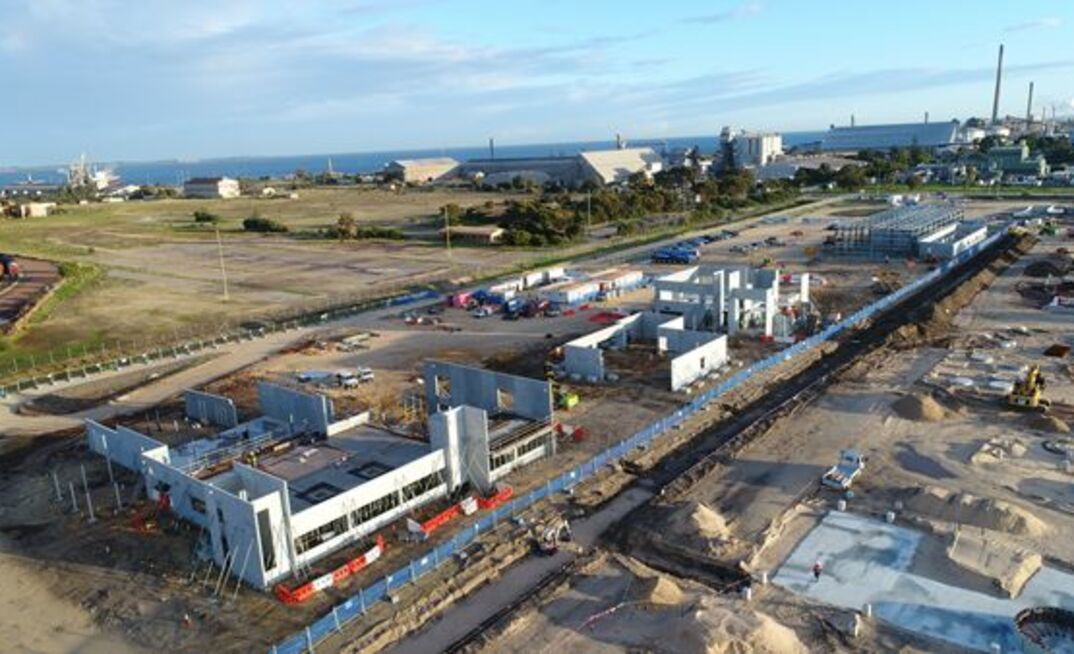Tianqi Lithium broke ground on a A$400 million lithium hydroxide plant in Kwinana, south of Perth, in late 2016.
Only a year later, it committed to a $317 million expansion of the facility before construction of stage one has even been completed.
Stage one will start production at the end of this year at a rate of 24,000 tonnes per annum, while stage two will double output from the end of 2019.
Feed for the plant will be fully provided by Tianqi’s partially owned Greenbushes mine in WA.
Its partner at Greenbushes, US chemicals giant Albemarle Corp, has also recently revealed plans for its own facility in WA.
In April last year, Albemarle signed a two-year option to lease a site in the Kemerton industrial area in Bunbury, south of Perth.
In November, the company submitted a plan to the Environmental Protection Authority to build a lithium hydroxide plant.
It is proposed that the Kemerton plant will produce up to 100,000tpa of lithium hydroxide from five 20,000tpa process trains.
The construction of the trains will be staged over 10 years, with Albemarle targeting construction of the first to begin this year.
Another global lithium major, SQM, entered WA last year via a joint venture with Kidman Resources.
SQM and Kidman are planning to build a WA refinery, in either Kalgoorlie, Bunbury or Fremantle.
“Fremantle or Kalgoorlie are probably the two front-runners at this stage,” Kidman managing director Martin Donohue said in late October.
A decision on the location is expected to be made shortly.
Neometals also likes Kalgoorlie as a potential spot for a hydroxide plant it’s planning, but is also considering Kwinana.
From early 2020, Neometals has binding offtake rights for at least 12.4% of production from the Mt Marion lithium mine.
A front-end engineering study (FEED) is underway with testwork conducted late last year in North America due for release next month.
The FEED study is not due until late this year, but Neometals plans to appoint an engineering procurement and construction contractor before the end of this quarter, subject to board approval.
Neometals is also in discussions with potential partners.
If a final investment decision is made before the end of the year, the company could be commissioning the facility in the March quarter of 2021.
Unsurprisingly, the WA government is hugely supportive of all these plans.
“Western Australia is starting to be seen for more than just iron ore, with an increased demand for lithium bucking the trend,” Mines and Petroleum Minister Bill Johnston said.
“There wouldn’t be any renewable technologies without mining, and our state is fortunate to have significant mineral deposits containing critical ingredients for battery technologies.
“WA has significant reserves of lithium, as well as other metals needed in battery and renewable technologies.
“These reserves, combined with WA’s proximity to the manufacturing centres in Asia, make our state well placed to capitalise on the growing needs of the battery market.”
And it’s not just in lithium where the sector is looking at value-add options for the growing battery sector.
In August last year, BHP Nickel West announced the approval of a US$43.2 million nickel sulphate plant at Kwinana, which will produce 100,000tpa of nickel hexahydrate from April next year.
Western Areas’ mill recovery enhancement project at Forrestania – currently underway – will facilitate the production of nickel sulphate for the battery space.
Fellow nickel producer Independence Group is looking into the downstream processing of nickel-cobalt concentrates from Nova, either on or offsite.
And last month, Mineral Commodities announced that it had finalised a memorandum of understanding with Doral for the formal assessment of a Kwinana site for downstream processing of natural flake graphite from the Munglinup project.
MRC executive chairman Mark Caruso said WA was already a leading jurisdiction for minerals used in lithium-ion batteries.
“It is a natural progression to use existing production of lithium concentrates, lithium carbonate, nickel, copper and cobalt – and now graphite – into complete downstream integrated value-adding,” he said.
“WA’s positioned to become a serious player in the EV battery and energy storage revolution and it is an opportunity which MRC intends to capitalise on.”

























